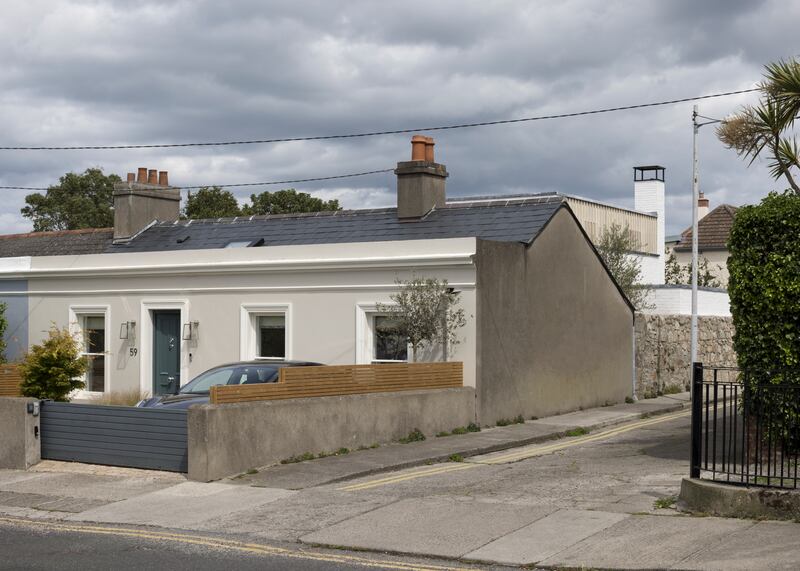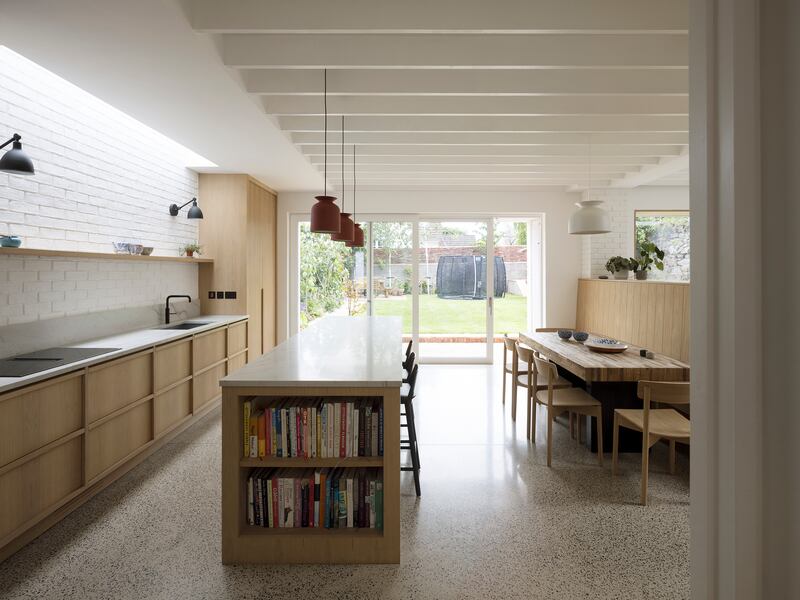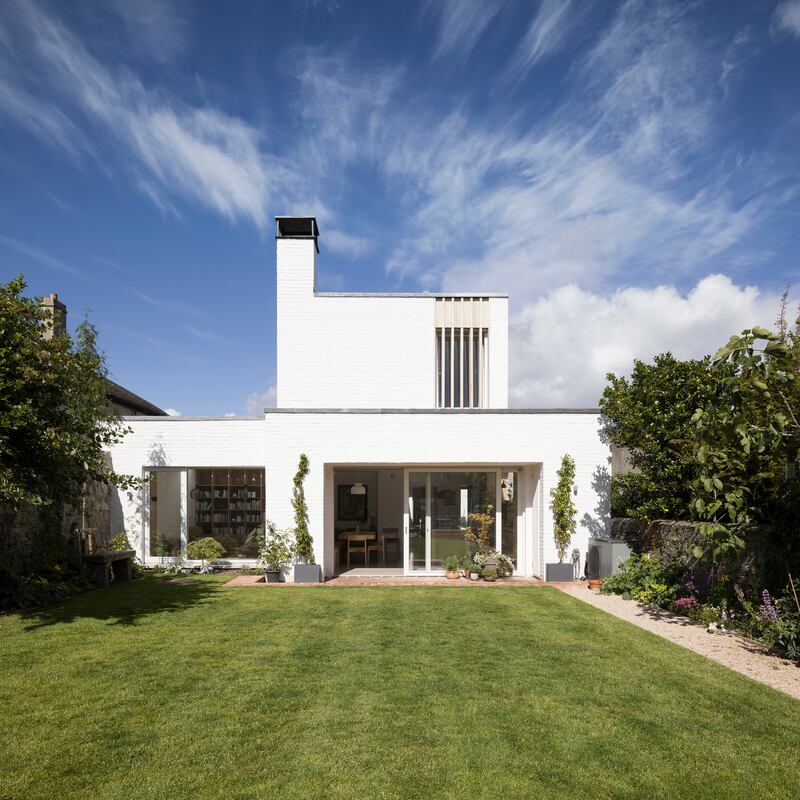Ask anyone who has recently completed a major renovation how long the job took and there’s a pause for some mental arithmetic to subtract lockdown site shutdowns and assorted Covid-related delays. For the owners of this handsome single-storey, end-of-terrace Regency cottage in the south Dublin village of Sandycove, the work, once the project was through planning permission, took 14 months instead of the expected nine. Not bad considering it involved more than doubling the size of the house, from 90sq m (969sq ft), as well as a major energy upgrade from a chilly Ber rating of E to a bill-friendly A3. It also included a two-storey extension to the rear to make space for a light-filled eat-in kitchen and living area downstairs, a main bedroom and bathroom upstairs as well as a sunny courtyard.
The owners, a family with three young boys, were trading up within the area when they bought in 2018. The family lived there for several months, while they gathered their funds for the build, got a feel for what they needed and chose an architect. Of the latter process, they talked to three practices: one that had done work in the area and would be familiar with any planning pitfalls in the highly sensitive to development neighbourhood; one “from Google, I just liked the look of the work they did”; and one who they knew, though not well, through social circles. In the end they went with the third option, Mark Arigho from Arigho Larmour Wheeler Architects, not so much because of the friend link, but mostly because they instantly struck up a rapport with the director of the small Dublin practice. “We felt from the start we were on the same page.”


This meant taking all their demands into consideration: with three growing boys, storage, bathrooms – “there was only one toilet in the house” – and future-proofing were to the fore. But throughout it all, he took everything on board and offered a clear vision of a unified aesthetic for their house.
“We liked that he had a very specific idea for how the interior should work and relate to the exterior,” says the owner, noting some of the interior design elements that were part of Arigho’s spec, including the lime-washed wall in the kitchen, to echo the lime wash on the new extension, as well as the extensive use of oak in the bespoke cabinetry. Throughout, there are several pieces of built-in furniture, from the large bench at the kitchen table, to the wall-sized bookcase and the study desk in the glazed hall that links the old part of the property with the new.
Actor Armie Hammer resurfaces as host of celebrity podcast
Heart-stopping Halloween terror: 13 of cinema’s greatest jump scares
Doctor Odyssey’s core message: just imagine Pacey from Dawson’s Creek holding you tight and saying, ‘Shhh, it’s okay’
Conor Niland’s The Racket nominated for William Hill Sports Book of the Year
[ Terenure property offers a three-bed and an apartment under one roof for €1.35mOpens in new window ]
“That was a late addition when we realised we’d be working from home,” says the owner, who appreciated the architect’s detailed specifications, right down to smaller details including the tiling in the bathrooms.
As well as oak, Arigho’s shortlist of materials used throughout included white paint for walls, concrete for the polished flooring with oak steps and thresholds which further unify the design. It was then up to the owners to add colour, and their own personality, with soft furnishings, art on the walls and the rest.
For Arigho, the property, when he started, was “a rabbit warren”. The original part of the house had been reconfigured decades ago, with walls knocked and the layout changed, and there was an old single-storey extension to the rear, which blocked out the light. He left the existing house much as it was – albeit with considerable “invisible work” such as insulation, plumbing and rewiring – to be used as bedrooms and a playroom for the children.




He wanted the new two-storey extension, which is not visible from the front of the road, to be “architecturally distinct from the original structure”. And it is; seen from the rear it’s a strikingly modern addition. From the front doorway of the existing double-fronted house, a view through the new living spaces connects to the garden beyond. A low-ceilinged glazed room links the two parts, which the architect says also works as a multifunctional space, “an inner hall, a place to study or do yoga” and that opens into a light-filled contemporary family room that as well as a large kitchen and dining area includes a family living space where the wood-burning stove is a focal point. The tall, square, modernist chimney on the extension is a notable feature. “The stove is only 4kW, you have to be careful not to overheat the room.”
[ Lir Chocolates founder’s architect-designed Dundrum home up for sale for €1.495mOpens in new window ]
The side of the house is south-facing and the new courtyard, which separates the old part from the new, is one of the owner’s favourite elements of the design. For the architect, site visits were one of his highlights, where he got to talk to the skilled tradesmen, bricklayers and cabinetmakers on the job because “you’re learning all the time” from their expertise.
Asked if the Sandycove project is typical of his aesthetic, Arigho says that for him it’s important to approach every project differently, in terms of taking into consideration context and client; the lime-washed brick, for example, was chosen as the property is near the sea and lime wash is a traditional finish that protects and adds a texture to the structure.
The aim, he says, is to create something that will be timeless in its design.
What the owner says:
Biggest mistake: “We didn’t give enough thought to exterior storage for the bicycles and all the rest that a family of five accumulate.”
Biggest win: “We utilised every single square foot of the space – there’s even storage drawers for the hurls and helmets – and everything was designed with a family of five in mind.”






